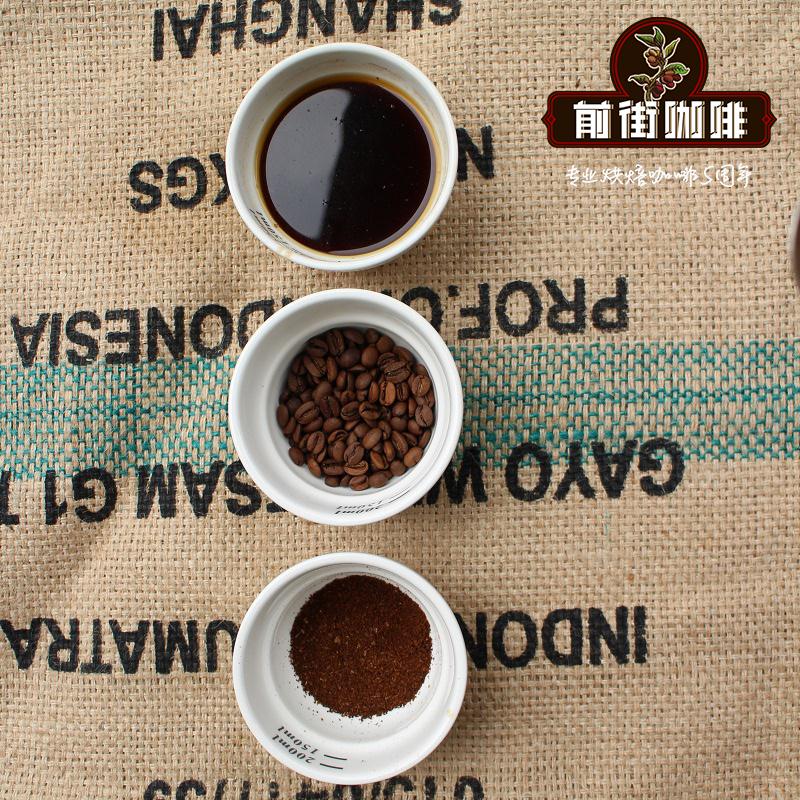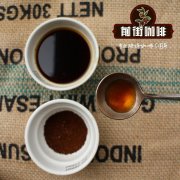Brief introduction of Coffee Flavor defect Group Aromatic Taint 36 smell bottle

Professional coffee knowledge exchange more coffee bean information please follow the coffee workshop (Wechat official account cafe_style)
Aromatic Taint (defect group)
(wet and fishy): soil Eathy, straw Straw, medicinal Medicinal
Soil: fragrance species (Aroma group) Earth soil
Flavor characteristics (Aromatic features of the sample): this is the smell of freshly excavated soil after heavy rain, like beetroot. This kind of "earth atmosphere" smell is omnipresent in the air. The power of the earth, as small as an ant, is filled between the atmosphere compared to the relationship between the earth and the moon in the universe.
The earthy aroma of coffee (The smell of earth in coffee): this is the main aroma produced by drying coffee. When it is dried in the sun, the coffee fruit laid flat on the ground absorbs the earth from the earth. Robusta beans are often treated in this way, so this flavor is common. Robusta beans from Madagascar and the Central African Republic are often removed from sheep skin to reduce the smell of dirt. This kind of flavor is also often produced by the storage of raw coffee beans. Ethiopian coffee has three kinds of land flavor, from good to bad, which are black, red and gray. From Harald in Ethiopia to Indonesia to Arabiya beans in Haiti, beans are often crushed, sprinkled and dried on the ground to highlight the earthy smell.
Coffee tasting (Coffee tasting): you will be amazed by the moist earthy taste of coffee from Vietnam or India. The other two Ethiopian coffees, Harald and Sidam, are fascinating with amazing aroma and flavor. Elephant beans from El Salvador and Siguri coffee from Papua New Guinea have a relatively light earthy taste.
5 Straw: fragrance species: dried plants.
Aroma characteristics: this is the straw aroma that pervades the rice fields after grain harvest. It has a warm, fresh smell like freshly cut hay. The sample (wine nose) is hay essence.
The "straw" aroma of coffee: some Indian coffee has been "wind-stained". During the monsoon months in the rainy season, raw coffee beans are exposed to moist air and stored in a specially modified warehouse. The beans grow into an attractive golden yellow and gain the sweet smell of straw. When the smell is evenly distributed, the coffee has a particularly attractive quality.
Coffee tasting: this is a very perceptible aroma. I often find good Brazilian mixed beans. It is also a detailed feature of Burundi beans. It is cleverly mixed with Chinese fir flavors in Ivory Coast's Robbins Tadou. In addition, the smell is very distinct in Kenyan Kitale and some Australian coffee.
5 kinds of medicine flavor: chemistry
Aroma characteristics: this burning sweetness is reminiscent of smoke, medicine and chemicals, often associated with "Rio flavor". The guaiacol in coffee creates the smell.
The "medicinal" aroma of coffee: this smell can't appear alone every time (it tastes so strong that it doesn't feel right). As a sign of long-term baking, this smell is particularly evident in robusta coffee and in "Latin" style coffee, such as espresso. This smell is very important to the overall aroma of coffee and is often used in artificial coffee seasoning.
Coffee tasting: most people may find the smell of the medicine unpleasant. If the taste is too prominent, then there is nothing wrong with this statement. But it is a very important flavor, is the coffee aroma "skeleton". Other aromas evolve around it. Rio Taste the coffee in Rio de Janeiro has a characteristic that is rarely seen in other coffees: this is the "Rio flavor". This highly personalized flavor is popular in Belgium and northern France, as well as in Greece and Turkey, where the custom of brewing coffee has further developed it. The taste comes from some kind of mold, which smells a bit like phenol and chlorine mixed with some pepper-mainly from trichloroanisole, a derivative of chlorophenol. It is one of the most powerful molecules in existence.
(dry stimulation): rubber Rubber, leather Leather, smoke Smoke
36 types of rubber aroma: chemical substances
Fragrance characteristics: get used to distinguishing the smell of rubber, a natural elastic substance. It comes from a latex liquid called latex, mainly by cutting Brazilian clover tree trunks, pressing leaves or taking natural leaky tubes. Raw rubber has a variety of uses, but with heating and the addition of sulfur, rubber will be more widely used. Ethyl-3 (furfurylthio) propionate can produce a taste that is exactly the same as the smell of rubber in coffee.
The "rubber" smell in coffee: this smell is characteristic in some coffees, not negative. The performance in Robota beans is more obvious than that in Arabica beans.
Coffee tasting: this is not a very fine coffee aroma, but it does exist in most good robusta beans. It is usually mixed with earthy and vegetable aromas, both of which are consistent characteristics of robusta beans. Rubber is rare in Arabica beans, but you can still find it in sigri coffee in Papua New Guinea. Although it cannot be said that this smell is common in very high-quality coffee, there is one exception: the extremely elegant and harmonious Colombian excelso valledupar coffee. If you find the taste of good Ethiopian coffee is understandable, but it also means that the coffee has been overroasted.
20 cowhide: leather scented species (Aroma group) animals
Aroma characteristics (Aromatic features of the sample) this is a strong, carefully tanned leather animal smell. The taste of this leather varies according to the type of animal (goat, sheep, buffalo, pig, wild boar, crocodile, etc.), as well as by the plant tanning materials used by tankers (oak, chestnut, mimosa, birch, cedar, lacquer tree). The product chosen by the tanker will determine the taste of the leather. Dyed, softened, nourished and waterproof, leather is endowed with a unique personality that experts can tell by taste.
The "leather" aroma of coffee (The smell of & # 39 in coffee) the leather flavor in coffee is a rare quality symbol, elegant and pure. It is a distinctive feature of mocha coffee.
Coffee tasting (Coffee tasting) the example I give this time is not the smell of a thick, tenacious North African tanning factory, but rather the smell of warm beeswax emitted by the thick leather tied to very old books. This aroma always indicates the great taste of coffee. This flavor can be found in high-grade Ethiopian coffee (especially Harald), and it can be easily found and appreciated in these beans.
32 smoke flavor, flavor type: baking
Aroma characteristics: this is the obvious volatility of the aroma, just like the smell of some kind of wood or resin when burning. This is a good smell, you can borrow its aroma to make smoked food. Phenols are important components of this flavor.
The "smoke" aroma of coffee: this flavor basically marks the final stage of coffee roasting, and then roasting will produce a scorched smell.
Coffee tasting: you can find various variants of this flavor in coffee, in fact, the taste itself is one category. You can smell it wherever there is coffee. In Central and South America, this flavor is evident in Colombian coffee, Honduran coffee, Pacamara coffee in El Salvador, and Victory coffee in Guatemala. It is somewhat different from Bahias coffee in Brazil. Depending on the roaster, this flavor in Jamaican Blue Mountain Coffee will be more or less highlighted. In Africa, you can find its flavor in Kiwu coffee in Zaire, and it is one of the main aromatic compounds in very good Ugandan coffee.
(pleasant fragrance): coffee pulp Coffee Pulp, fragrant rice BasmaticRice, roast beef Cooked Beaf
13 Coffee pulp Coffee Pulp, flavor type (Aroma group): fermentation, wine flavor
Aroma characteristics (Aromatic features of the sample): this is the smell emitted from the manor, where coffee cherries are separated from the coffee pulp on high-end farms. The pulp on the coffee cherry is broken down by fermentation: the beans are softened and fermented, releasing volatile acids that bring a special flavor known as wine. Serious coffee lovers can identify and love the taste. Coffee contains 2-methyl butyric acid and 3-methyl butyric acid to bring this flavor. Note: if the coffee bean stays in the fermentor, it will undergo a second fermentation, a process that will not change its appearance, but will create a very unpleasant taste that will only show up after roasting, making the coffee undrinkable. This smell, called "stinky beans", has always been a serious problem for bakers. But this smell should not be confused with the taste of fermented coffee pulp.
The "coffee pulp" aroma of coffee (The smell of & # 39): this is the key to the aroma and the main feature of coffee. Like the volatile acids in wine, this aroma is an inherent quality and can be unpleasant if it is excessive. This aroma is elegantly integrated in high-quality coffee, which is evident in washed South American coffee beans.
Coffee tasting (Coffee tasting): don't try to disguise the aroma of this wine. This is a basic and remarkable almost frivolous feature in carefully handcrafted Colombian top coffee. In coffee from Antioquia,Caldas or Boyaca origin, this flavor will appear, will not be too obvious, strong, significant, fruity. Thousands of miles away in Africa we also found this smell in the remarkable Kenyan AA, which may be more introverted, but still highlights the fruity and wine flavours in its structure.
21 Indian fragrant rice flavor species: baking (cereal)
Flavor characteristics: this characteristic flavor is cooked rice from Southeast Asia, such as Indian rice basmati. This kind of rice is also called popcorn rice. This aroma will make people encounter high-temperature expansion of corn grains. 2-acetylpyrrole is thought to be the cause of this aroma.
The smell of Indian rice in coffee: this is the taste in the early stages of baking. It is difficult to distinguish this flavor from the other flavors produced by baking and requires a lot of practice.
Coffee tasting: I can easily distinguish this smell from Australian coffee. I like the aroma of Arabica from El Salvador and the very good robusta coffee from Ivory Coast.
31 boiled beef flavor, flavor type: baking, animals
Aroma characteristics: this aroma has strong aromas of boiled beef and roast poultry and smells very appetizing. 2-methyl-3-mercaptofuran tastes like this boiled beef.
The "boiled beef" aroma of coffee: this subtle, sulphur aroma is suitable for making very good Arabica coffee. It naturally blends perfectly with the aroma of cocoa.
Coffee tasting: this is one of the most popular flavors of some of the top coffee in the world. It has had a great impact on the development of the very fine coffee aroma in Costa Rica and is mixed with the vegetable aroma of Guatemalan Victory coffee. In Colombian coffee, its smell is very strong in Excelsos coffee, but this smell is rarely seen in Brazilian coffee. You can find this flavor in African coffee, especially in raw beans, but only slightly during brewing. This flavor is not conspicuous in Ethiopian coffee, but it is found in very good Kenyan coffee.
END
Important Notice :
前街咖啡 FrontStreet Coffee has moved to new addredd:
FrontStreet Coffee Address: 315,Donghua East Road,GuangZhou
Tel:020 38364473
- Prev

The 6 most worrying questions for coffee fans! The benefits and disadvantages of coffee!
Professional coffee knowledge exchange More coffee bean information Please pay attention to coffee workshop (Weixin Official Accounts cafe_style) With the annual growth of coffee consumption in China, drinking coffee has gradually become the beginning of a busy day for some modern people every morning. However, the mainland of China consumes only 6 cups of coffee per capita every year, which is far from Taiwan compatriots across the sea, let alone South Korea,
- Next

36 fragrance bottles Enzymatic groups Aroma types Fruit, vegetable, nectar
Professional coffee knowledge exchange More coffee bean information Please pay attention to Coffee Workshop (Weixin Official Accounts cafe_style) Enzymatic (enzymatic group)(fruit): lemon Lemon, apple, apricot Apricot (vegetable): potato, Cucumber, pea GardenPeas (nectar): Coffee Blossom, perfume rose TeaRose, Honey
Related
- How did the Salvadoran coffee industry develop in Central America?
- What exactly does the golden cup extraction of coffee mean?
- The Origin of Coffee flower
- [2023 Starbucks World Earth Day] there are more meaningful things besides free Starbucks coffee!
- What kind of coffee is there in Spain? 9 Flavors of Spanish Coffee
- Aromatic African coffee| Kenya's coffee culture and historical production area
- Liberica Coffee Bean knowledge: the characteristics of Liberian Coffee beans of the three original species of Coffee beans
- The origin and formula of Spanish latte introduces the taste characteristics of Bombon coffee in Valencia, Spain.
- How to adjust the solution of over-extracted coffee
- What is the tasting period of coffee beans? What is the period of coffee and beans? How should coffee wake up and raise beans?

